For all types of sports watches, weight is the enemy of performance. In search of superior functionality, more comfortable wear and better differentiation, many watch brands have declared war on weight. It has been going on for fifteen years, and there’s no end in sight. The goal of eradicating every superfluous gram is being fought through metals and composite materials.
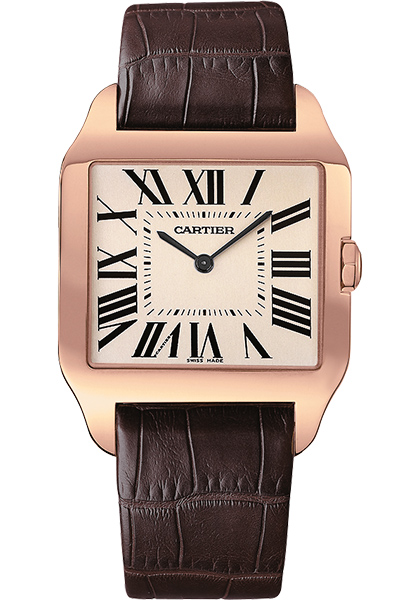
Montre Santos-Dumont © Cartier
It’s important to realise that the pursuit of ever-lighter weights has gone hand-in-hand with inflated volumes and multiplying functions. A small steel watch with a diameter of 34 mm, on a nylon strap, weighs around 50 grams, which many of these brands would consider record-breaking territory. But these watchmakers are generally active in the ultra-sport watch segment, where diameters of 45 mm and automatic movements mean that weights of 150 grams and above are not out of the ordinary. New alloys and materials are being sought to mitigate the weighty side-effects of contemporary design. The Graham Chronofighter Oversize Superlight Carbon is a prime example: thanks to its composite case reinforced with carbon nanotubes, it weighs just 96 grams. To take a different example, the Cartier Santos-Dumont, which is big and made of rose gold, weighs just 70 grams because it is extremely thin.
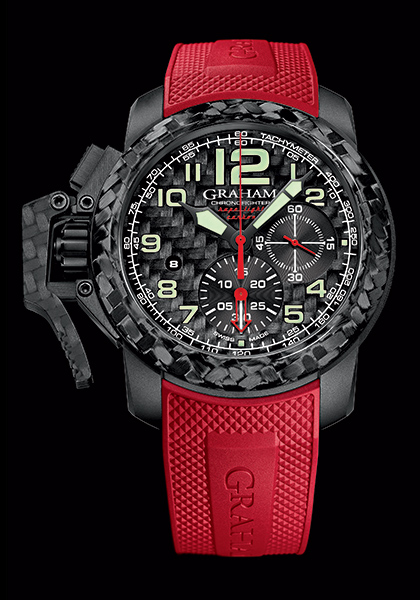
Chronofighter Oversize Superlight Carbon © Graham
Let’s have a look at the weight of the raw materials themselves. The steel most widely used in watchmaking, and the material most watch cases are made of, is type 316 L. It weighs 8 grams per cubic centimetre. Titanium is 4.5, and aluminium is 2.7 g/cm3. The latter is consequently highly sought-after, but the problem is that it is soft. Even if it can be protected against scratches, it dents relatively easily. For that reason, it is often combined with other more technical materials, which are harder to work, such as magnesium or zirconium (yes, it’s a metal!). But when the surface is hardened, through thermal or chemical treatments, exceptional results can be obtained. The F.P. Journe Octa Sport weighs 53 grams total, thanks to the use of an aluminium alloy in both the movement and the case.
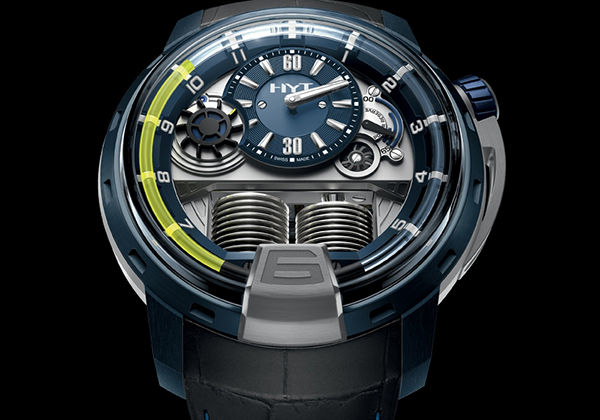
H1 Alumen Blue: : its case is an alloy of aluminium, titanium, magnesium and zirconium © HYT
But alloys are not the only route to lightness. Composites and ceramics are just as effective, if not more so. However, they can be extremely costly to implement. The advantage, however, is that these materials help to solve the problem where it matters most: on the cases. In terms of weight, movements are pretty light, particularly if the manufacturer makes the effort to reduce their mass further through skeletonisation, or by abandoning the automatic option – the oscillating weight, after all, is … a weight.
The technical ceramics used in watchmaking are pretty light. The most common is zirconium dioxide, which weighs 5.89 g/cm3. Aluminium oxide is 3.97 g/cm3. Despite that, ceramic watches are not sold on the basis of their reduced weight, and for good reason: because ceramic is so hard, it is used for the larger sports watches, where records are largely out of the question. We always come back to the same equation.
Composites currently have the wind in their sails, since they come in infinite varieties, and are used in many cutting-edge industries. A composite is composed (hence the name) of several materials, whose properties and advantages are combined. One typical example marries the rigidity of carbon fibre with the solidity and hardness of plastic. In the most extreme cases, the plastic is the PEEK (polyether ether ketone) used by Panerai and Hublot. But other composites are used. For instance, the Ceratanium used by Iwc Pocket Watch 18k Replica is a cermet, a composite that combines an aluminium lattice with ceramic. But the examples are too numerous to mention.
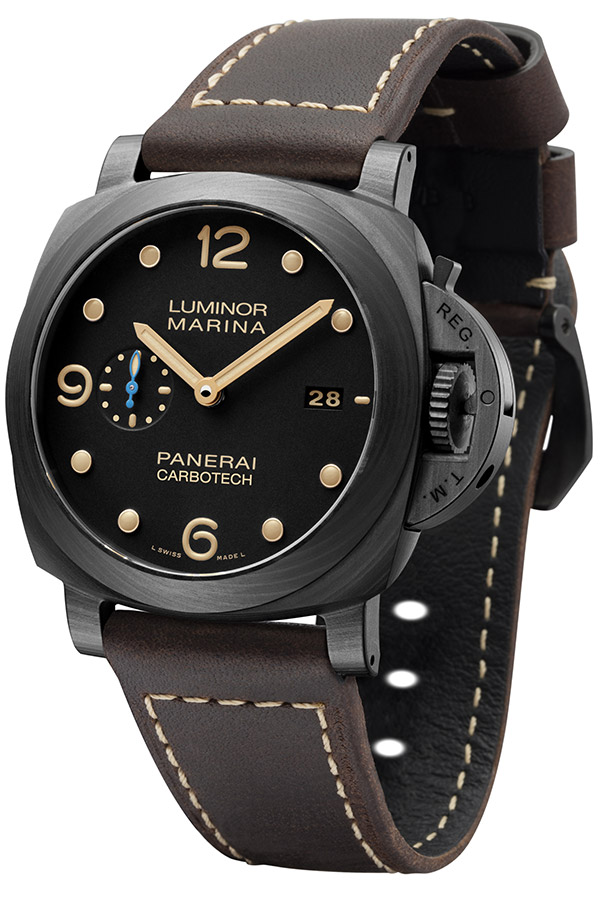
Luminor Marina 1950 Carbotech™ 3 Days Automatic © Panerai
The most effective method is to combine the strengths of the material, and eliminate weight wherever possible and by whatever means. The Richard Mille RM27-01 uses a suspended skeleton movement which has virtually no baseplate. The case is made of a composite material stuffed with carbon nanotubes. The movement weighs 3.5 grams including its tourbillon, and the complete watch weighs in at a featherweight 19 grams. By using carbon filled with graphene, a material known as Graph TPT, the RM50-03 McLaren, a tourbillon flyback chronograph measuring 44 x 50 x 16 mm, tips the scales at a very moderate 40 grams. In these cases, the weight is inversely proportional to the cost. But that doesn’t apply everywhere. One notable mass-produced exception is the Swatch Sistem 51. It’s automatic, made of plastic, Swiss Made, weighs 43 grams, and costs only 150 francs.
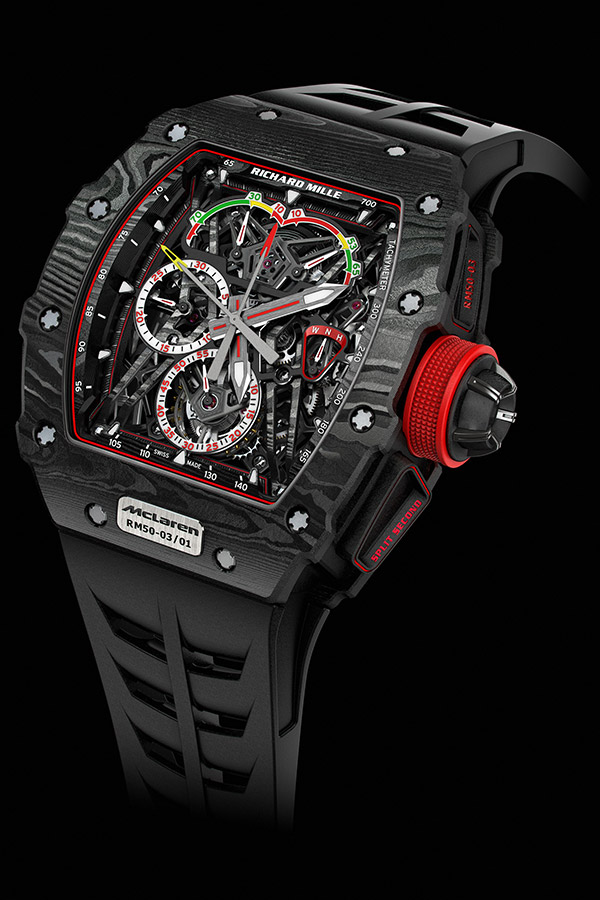
RM50-03 McLaren © Richard Mille
IWC has established the limited-edition IWC Ingenieur Chronograph Sport Edition “50th Anniversary Of Mercedes-AMG” see to commemorate, as the name implies, the gold anniversary of AMG, the performance motoring arm of Mercedes-Benz. The watch will be offered in a limited run of 250 pieces and is available at only a small premium over the normal Ingenieur Chronograph Sport.Under the dial, this watch shares the identical movement as the normal production IWC Ingenieur Chronograph Sport or the Portugieser Chronograph, that’s the in-house Caliber 89361. An automatic chronograph equipped with 68 hours of power reserve, this movement features flyback functionality, a feature that fits right in with the motorsport racing theme as it is used to time successive periods of time like race laps. Additionally, it has the special hour and minute totalizer (that we discussed in the above mentioned linked-to article) at 12 o’clock that is intended to generate the chronograph studying more intuitive.The one gap between this IWC Ingenieur Chronograph Sport Edition “50th Anniversary Of Mercedes-AMG” and another watches equipped with all the calibre 89361 is evident when you look at the case back. Like the first Ingenieur out of 1955, the IWC Mercedes-AMG Ingenieur Chronograph Sport is equipped with a soft iron cage which helps create the eye anti-magnetic, though IWC doesn’t provide concrete figures on how anti-magnetic it really is. In keeping with all the motorsport and specifically AMG theme, the back of the soft iron cage has holes drilled into it at a top notch formation to make it resemble a brake disk. Additionally, the back of the cage is engraved with the words, “Tribute to a Man One Engine.” This is in reference to the fact that each engine that is made by AMG is constructed from scratch by a single AMG mechanic. Personally, I struggle to find the advantage of engraving and drilling into the soft iron cage, and think a good case back with similar engravings would have been sufficient. The AMG motif, however, is loud and clear.
